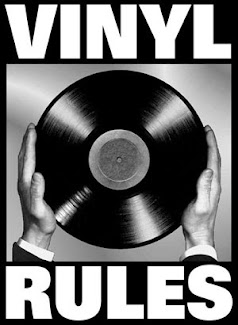 Glam rock as a youth movement and a musical sub-genre was essentially over by the end of 1975. It had, if I’m being honest, been in slow decline since early in 1974. The best of the glam anthems had been and gone and established glam artists had either moved on to other pastures or were simply treading water.
Glam rock as a youth movement and a musical sub-genre was essentially over by the end of 1975. It had, if I’m being honest, been in slow decline since early in 1974. The best of the glam anthems had been and gone and established glam artists had either moved on to other pastures or were simply treading water.There were a few ‘Johnny come lately’ artists hanging on for grim death or trying to keep the whole thing going, but essentially glam was dead, its ability to outrage and shock had long since passed in the eyes of the public and mainstream media.
But can any musical genre ever truly be finished? In today’s world of unlimited access to music, (often highlighted in blogs such as this or accessed through sites like ‘Spotify’ and ‘You Tube’) every form of music is at your fingertips.
Even after its immediate mark on mainstream music had ended, the glamorous, aesthetic styles, unusual clothes and hard pop-rock sounds were a major influence upon the punk rock movement that followed.
Bowie, Bolan, and the New York Dolls among others directly influenced early punk bands such as The Ramones, Blondie, The Sex Pistols, The Damned (with whom Marc Bolan toured during 1977) and Siouxsie & the Banshees.
Glam would be an even bigger influence on post-punk bands such as Joy Division, The Cure, Adam and the Ants, on later ‘New Romantic’ artists such as Culture Club and Japan, and on late 70’s, early 80’s synthpop.
Artists like Gary Numan, Ultravox and Soft Cell were strongly influenced by glam in both image and sound, with some even starting out in glam bands.
The Gothic rock movement that also came from post-punk took cues from glam, and in particular Roxy Music and David Bowie. Artists such as these were a great influence on bands like Bauhaus who covered Bowie’s Ziggy Stardust, and later Telegram Sam by T Rex.
In fact it has always been acknowledged that Roxy Music and especially David Bowie played a large part in shaping the new wave sounds that followed glam. Both used the genre and their retrospective influence to gain large commercial success in the early 1980s.
The Alternative and indie rock scene in the 90’s would also be influenced by glam, particularly in the UK. In the 1990s, Britpop referenced glam rock, with bands like Oasis using Slade and Mott the Hoople as primary influences.
Others include, Suede, Manic Street Preachers, Heavy Stereo, and even Morrissey whose album ‘Your Arsenal’ also had glam rock leanings, with production by Mick Ronson.
At the 2004 Brit awards David Bowie appeared with Placebo to sing a cover of T Rex’s 20th Century Boy, and in a direct line from glam via the Sex Pistols were one hit wonders Sigue Sigue Sputnik who recreated the glam sound in the 80’s with ‘Love Missile F1-11’, later to be covered by David Bowie himself, so the glam sound came full circle.
In America the glam rock influence can be seen in the emergence of ‘Glam Metal’. Hanoi Rocks (formed in 1979) are widely regarded as one of the first glam punk/metal bands.
In the beginning the American glam metal movement would take huge influence from glam rock bands like the New York Dolls. Quiet Riot had their first huge commercial success by covering Slade's 'Cum on Feel the Noize' in 1983.
However as time went on there was less of a pure glam rock sound in glam metal and it began to be more influenced by a number of different styles of 1980s pop music. Nonetheless, the Los Angeles music scene spawned many glam metal bands, including Poison and Twisted Sister.
In the UK (where glam was always more popular) bands such as The Quireboys and Girlschool emerged forging a glam metal sound to rival the American version.
In the intervening years, glam has enjoyed sporadic and modest revivals through bands as diverse as, The Darkness, Placebo, Gay Dad, Scissor Sisters, Goldfrapp and Marilyn Manson. Even into the present day with Lady Ga Ga and The Stereophonics, whose new single ‘Innocent’ has a definite glam rock rhythm and feel.







!BWk~%24(KGrHgoOKjEEjlLm(s8hBKnr9KGH3Q~~_12.jpg)























.jpg)























